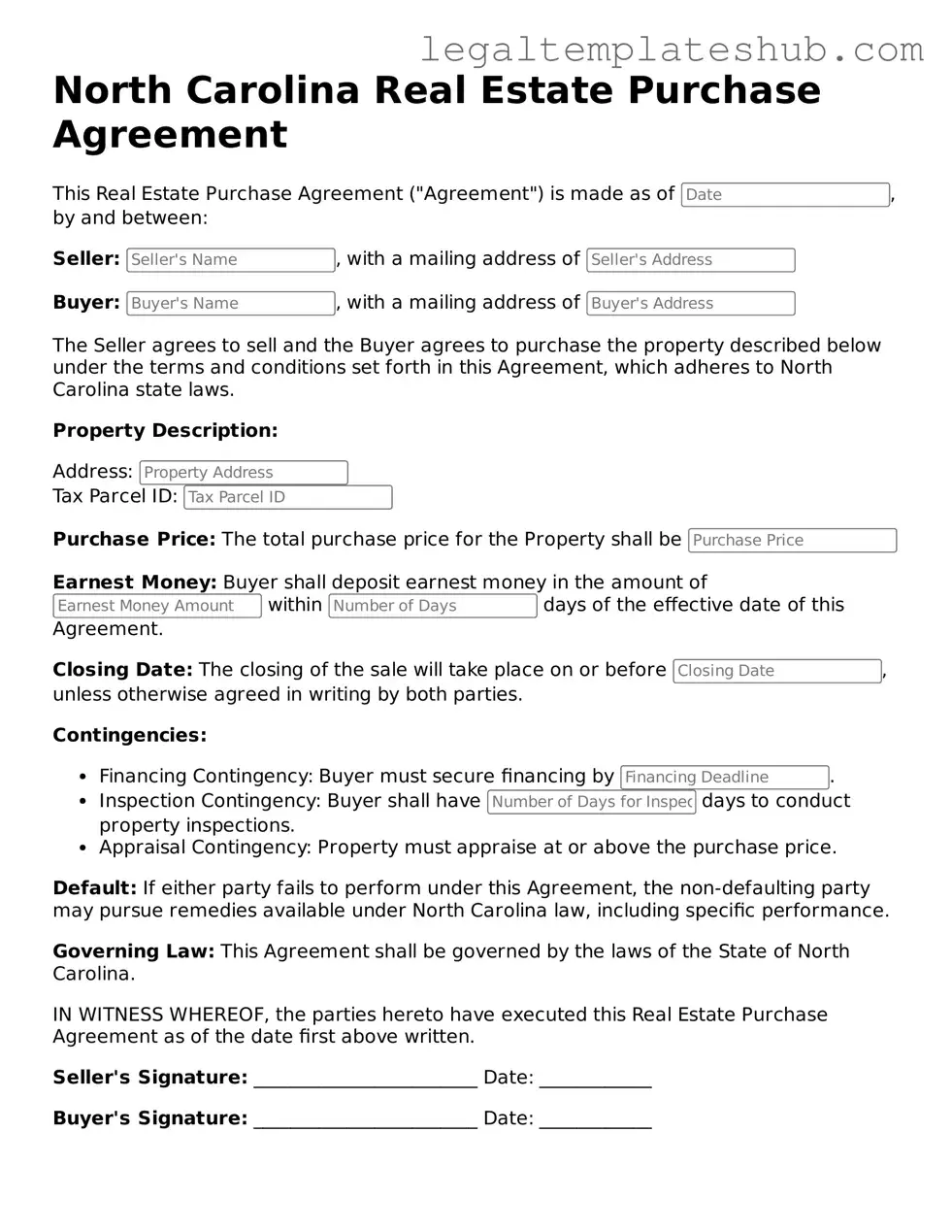Printable Real Estate Purchase Agreement Document for North Carolina
The North Carolina Real Estate Purchase Agreement form is a legal document used to outline the terms of a real estate transaction between a buyer and a seller. This agreement ensures that both parties understand their rights and responsibilities throughout the buying process. To get started, fill out the form by clicking the button below.
Access Editor
